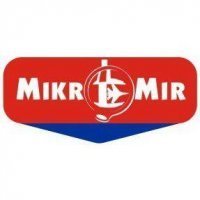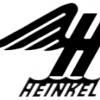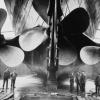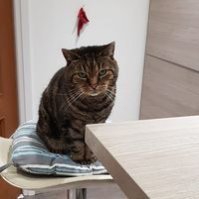Search the Community
Showing results for tags '1/350'.
-

SMW 2015 Quickie- Luna 1/350 Rocketship
azureglo posted a topic in Work In Progress - SF & RealSpace
Greetings SF & RS BMers, I have returned from SMW2015 with a large haul and found this in there so what better way to reduce the stash than a quickie build and practise my Alclad skills. First off, ye actual box Sprue singular, note clever tabs to protect needle sharp nose and very, very shiny plastic. Portholes in with odourless cyano, injector pin marks filled with cyano/dental resin powder All sealed up but with a prominent seam that I'm trying out this black cyano also scored at SMW. Allegedly it dries rock hard and sands/scribes well- could be an alternative to the voodoo cyano/resin powder mix I use. Well that was an entertaining one and half hours, bed time now and lets see how my flex-i-files cope with the new filler tomorrow. Cheers Anil the Space Newbie -
Another new release from Mikro-Mir, the Pr. 1710 'Mackrel' was named 'Beluga' by NATO. It was a diesel-electric experimental vessel used for testing propulsion systems, hull forms, and boundary-layer control techniques. Only one was built - but many of the features it tested were used in later designs such as the Lira and Alfa subs. Mikro-Mir's box art..... Injection-moulded parts...... Instruction sheet and colour scheme.... Assembly diagram....... Decal sheet and etched fret...... This is another one that I will be building soon - to add to my growing collection. Ken
-
I want to please you with good news. Ready 3-D graphics British K-class submarine. Soon will work began.
- 57 replies
-
- 2
-

-
- British K-class submarine
- British submarine
-
(and 1 more)
Tagged with:
-
This is the new Mikro-Mir kit of the USS Lafayette class FBM sub that I have converted to the one-off USS Daniel Webster SSBN-626. Daniel Webster had the normally sail-mounted dive planes moved to a 'mini-sail' on the upper bow to try to solve some porpoising problems. The system worked, but reduced top speed, so, during a later re-fit they were removed and restored to the sail position. The conversion simply involved making a new mini-sail from plastic card and mounting it, with the kit dive planes, onto the bow.... The new configuration completely alters the look of the boat..... ......and resulted in her being nicknamed ''Old Funny Fins'..... Close up of the home-made 'mini-sail'....... The decals for Daniel Webster are included in the Mikro-Mir kit of the USS Lafayette - so I suspect that they will be releasing a kit of this boat eventually, but I couldn't wait. In fact, the Lafayette kit includes a great set of decals with pennant numbers and markings for all the FBM's in both the Lafayette and later James Maddison classes - as well as for early and late colour schemes. I have another Lafayette kit to make as a 'normal' boat..... Ken PS - Some photos of the kit and construction here
- 13 replies
-
- 11
-

-
She's launched!!! This is my conversion (more of a scratch-build really) using the Mikro-Mir K-Class kit to make the one-off cruiser submarine with twin turrets mounting 5.2in guns - HMS X.1. I lengthened and widened the K4 hull and scratched the casing, bridge and gun turrets - with Milliput for the bulged bow... The WIP is here. Ken
- 16 replies
-
- 9
-

-
Another one to add to the collection..... Tamiya's superb I-400........ More photos here. Ken
- 14 replies
-
- 15
-

-
I had some issues when building this kit. I do like the model, the castings really good and only needed a bit of sanding to get a good fit. My big issue was the photo-etch (again) and numerous repaints which led to some of the detail being lost. Anyway a British sub is always worth the time and I'm pleased with the result. Hopefully Micromir will bring out the K-class with the bow buoyancy tank I think they look great. If you want to see how good this kit can look check out Flankerman as usual.
-
This is a remodel and repaint of my previous entry HMS Safari. I filled in the hull sections and added some additional pieces to make HMS Sealion. I inspired by other modellers work and my recent visit to the museum at Gosport so I had a crack at a more unusual paint scheme. The picture is not in colour so I made an educated guess and I'm quite happy with the results.
-
Whilst waiting for the Mikro-Mir K-Class subs to arrive at Hannants, I dug out 3 Chinese PLAN subs from my stash and built them, They are all by Hobby Boss and all 1/350 scale - painted using Halfords car sprays..... First up, the Type 033G 'Wuhan' class SSG .......... Next the Type 039G 'Song' Class SSK...... Finally, the Type 091 'Han' Class SSN.... More images ....... Wuhan........ Song ....... Han I'm off to submerge myself in looking at photos of HMS X.1....... Ken
- 13 replies
-
- 9
-

-
Introduction Time for my first WIP-contribution to this forum. It regards a 1/350 HMS Dreadnought by Zvezda, with aftermarket stuff from Pontos and WEM. Scratchwork beside the aftermarket stuff will be plentiful. For reference purposes I mainly use John Roberts' magnificent book "The Battleship Dreadnought - Anatomy of the ship" featuring hundreds of drawings. Beside that I use old photographs from a Dreadnought photo DVD that can be purchased and Kagero's 3D-book and drawing, although the latter are not a reliable source. My impression of the kit Zvezda have done a great job on some aspects such as certain detailing, not so good of others. The biggest problem is that Zvezda have copied the port and starboard sides of the hull: to be exact, the starboard side is mirrored onto the port side. This is thoroughly incorrect as the layout of ports and side scuttles ('portholes') on respective sides are anything but symmetrical. The only thing differing the Zvezda port from starboard is the single hawsepipe (port) vs. the double hawsepipe on starboard. By the way if you think that's a good reason to choose a Trumpeter Dreadnought, think again; that kit has exactly the same flaw. Quite the coincidence, obviously. The problem that Zvezda faced when they were engineering this kit must have been that there are no drawings available of the ship's port side. Plenty of pictures though and on pages 79-87 of the Roberts book there are very precise drawings showing the position of the side scuttles and ports on both sides. My impression of the literature Roberts' book is simply excellent in almost every way. One should use this as a primary source of reference if desiring to scratchbuild this ship. I have not seen any obvious mistakes in the book thus far. Kagero's book is very nice but not for recreating the hull. Like Zvezda and Trumpeter, they have not based their drawing on Roberts' drawings but, rather, seem to have made estimations based on pictures. Comparing Roberts' drawings and Kagero's book to real photographs, it is understandable that certain mistakes were made by Kagero, but still it's a shame (also for their own efforts) because they have done such an amazing job on the 3D-rendering. I recommend using both books (Kagero's to a certain extent as mentioned) and I also recommend purchasing the picture DVD. It features more than 50 photographs of HMS Dreadnought I had not found via Google. This topic I usually take a lot of pictures and describe almost everything I do. I know some of you will like that, others will not. As this is my first WIP-topic on this forum I'll just try to design this topic as I usually do and see what you'll think of it. If my elaborateness is not much desired I'll keep it more compact next time. I started building this ship about a year ago but not much visual progress was made due to the above-mentioned problems. Actually, the only visible progress is 'going back to basic' as I sanded the two hull sides flat. Of course, at first I didn't see Zvezda's errors. Then I followed Kagero's plans, then I found out that also Kagero's plans are faulty, etc. etc. Other builds have also interfered with this one. Many, many mistakes were made and corrected. I always describe my own errors, hoping that others will learn from them. Time spent on the Dreadnought before the following picture was taken: 97 hours. Number of pictures taken and described until then: 117. Let's start from that point! Oh yes.. as a non-native speaker mistakes in language can be made. I'd very much appreciate it if you guys correct me if I use certain terms incorrectly. The build 118. Originally I didn't know how to make the cone-shaped relief at the hawsepipe. So I decided to move that relief a few millimeters. Starting by drilling a hole. 119. Removal of the part by using a microsaw and a sharp hobby knife. 120. After the amputation. 121. Filing the plastic a bit towards the designated position, then glueing both parts together (some pieces of Evergreen are added, not yet installed when the picture was taken). 122. Gluing the brass sheet onto the polystyrene. Secure with a plastic modeling support. 123. Making the next piece of brass sheet (toward 'P' barbette). The impressions are where the side scuttles should be drilled (1 mm.). 124. Holes are drilled into the plastic. 125. And then I started anew (yet again), because the two pieces of brass sheet didn't connect / align. Something just wasn't right... It obviously had something to do with the troublesome mathematics involved in calculating the sizes and lengths. Without the use of a 3D-model the lengths are virtually impossible to calculate for someone with limited math skills such as myself. A hull has two curvatures: horizontal and vertical. Because of that, calculating the lengths of sheet or distances between side scuttles is almost impossible. On top of that, certain horizontal lines which I thought to be dead straight turned out to be slightly curved. Time to say goodbye to (some) calculations, as on 1/350 a deviation of merely a tenth of a millimeter is visible. After some deliberations I decided to try to tackle this in a different, more thorough, way. I followed the following step by step-plan: 1) Sideview drawing: measure distances flying deck -> sea level, every 5 resp. 10 millimeter along the hull, accuracy 1/100th of a millimeter. 2) Sideview drawing: measure distances high deck -> sea level, every 5 resp. 10 millimeter along the hull, accuracy 1/100th of a millimeter. 3) Sideview drawing: measure all distances regarding armor plates (4 lines horizontal along the full length of the hull, 4 lines vertical). 4) Draw all other objects such as side scuttles, ports, hawsepipe etc. and measure their heights as well as horizontal position from bow. 5) Multiplying all values *1,097 (scale 1/350) and adding 2,75 millimeter due to raised height -> Zvezda apparently added 2,75 millimeters to the sea level line along the length of the hull. 6) Top view drawing: measure distances of all side scuttles (port side), top row and bottom row. Multiplying by 1,097. 7) Positioning the brass sheet onto the model and scratching every individual spot into the brass with an electronic marking gauge. This way, a sort of puzzle evolves, which needs to be carved out and on which holes are to be drilled. Hereunder I illustrate these things through photographs. To start, I attach the brass sheet and measure it. 126. Working with two rules simultaneously. 127. Scratching the lines. Where there were height differences between two impressions, scratching was performed, for example, by moving the gauge from left to right and at the same time lightly and gradually rotating the gauge. 128. Due to copyright reasons I cannot show (parts) of the drawings featuring measurements. Quite of few of them are present, it was a lot of work. 129. Interim score: a couple of lines were drawn. 130. I don't often need my outside caliper, but now it comes in very handy! Using it, the contours of the bow could be perfectly scratched into the brass. 131. The construction on the following picture needs some explanation. I used it to mark the horizontal position of the side scuttles and ports on the brass sheet. 1) Ruler is attached by tape to table, perpendicular to table ('work bench') side. 2) Hull is also on table, along table side so perpendicular to ruler, also taped to the table. 3) Electronic marking gauge (I'll hereinafter call that simply 'gauge') is used parallel to the ruler on one side and equal to the ruler on the other side. That way, a 'sideview-straightness' is created. 4) If according to the drawing 100 millimeters behind the bow a side scuttle is present, that number must be multiplied by 1,097. The gauge is extended to 109,7 millimeter and is positioned over the ruler (which is taped onto the table). Where the extended arm of the gauge touches the hull, I mark a little dot using a 0,3mm. fineliner. 5) Using a folding knife (see photo) or ruler, a vertical line kan be drawn. Somewhere along that line the side scuttle will be drilled. The height will be determined later. 6) To keep an overview of the situation, I number the side scuttles and ports. This makes for a precise measurement as ruler and ship are perpendicular and solidly taped to the table, plus all measurements are based on the Roberts' drawings. 132. Marking with the fineliner. 133. Current status. 134. Markings are where the side scuttle holes should be drilled: simply measured on the drawing, multiplied by 1,097 and 2,75 millimeters added. 135. And this is what it looks like after -finally- the brass is detached from the hull. Beside measurements, it took about 5 hours to prepare this piece for carving and drilling. Very excited and slightly nervous... I can't make any mistake now or I have to restart yet again! 136. Meanwhile I have learned how to make a cone shape in brass... by using a 0,5mm. metal drill on a Boschhammer machine ! I tried to drill a hole but it just didn't work. Everytime I tried I got a cone. At one point I thought... hey, wait a minute! This is exactly what I need! Still, practice is necessary. To make a nice round cone I had to practice a couple of times, scrapping quite a bit of brass sheet . 137. The scratches will be deepened and thereafter bent back and forth, so that the sheet will eventually break along the fold lines. 138. Drilling was done -as you can imagine- extremely carefully. I really couldn't afford to make any mistake. 139. On the next picture (don't mind the bent cone) you can see the peculiar way the heights of the side scuttles vary. Only by the curvature of the hull and the sheet (when attached to the hull), it will appear straight. But this result I could never have attained by calculating only... 140. Filing the backside of the brass in order to make it nice and flat, makes for two accessory advantages: it creates grip for the glue to 'bite' and it nicely precurves the sheet. 141. This time it (logically) fits. Nevertheless for me it is marvelous to see this result after so much work (most of which is not discussed in this first post). 142. To demonstrate the size, in comparison with a 1/24 scale Krupp Titan-engine, see the next picture. Also the reinstated cone is visible here. Spent time thus far: 113.
- 49 replies
-
- 4
-

-
- hms
- dreadnought
- (and 5 more)
-
Here are some photos of my collection of U-class submarines. I really like these small submarines and i'm keen to build more. Not 100% on colours but i haven't found much in the way of reference material. I'm building more and more world war 2 subs now, although Id prefer to build the British designs. Alex
-
Really nice kit, the moulds are great and it goes together nicely. Shame its all black but it doesnt look too boring I hope
-
Loving my 1/350 scale U-boats at the moment, finally found a weathering style that I like. From Left to right, Hobbyboss Type VIIA, Revell Type VIIC, Revell Type VIID, Micromir HMS Meteorite and Atlas Type XXI. These have been fun filling the gap while I wait on some OKB 1/700 subs now and the Micromir K-class come on Royal Mail!!!
-
The kit: The ship is Zvezda's 1/350 scale battleship Borodino, which was the lead ship of a class of five pre-Dreadnoughts built for the Imperial Russian Navy and launched in 1901. The Extras: I'll be using the photoetch set for Borodino by Gold Medal; wooden decks by Artwox; and replacement barrels by RB Model. I may also add the nameplates for the display stand, made by North Star. The build: As I've painted my fair share of grey warships over the years I will be painting Borodino in black with yellow funnels. In actuality I will probably opt for a very dark shade of grey in order to help recessed detail stand out, although I'm wondering if a satin finish over pure black might also achieve satisfactory results? Weathering will be at a minimum as I'm aiming for that 'clean' display stand model look. The first step will be to clean up the hull parts and drill out the portholes in preparation for priming. Then I will have to study all the instructions and get my head around how best to tackle the sub-assemblies without cutting off access for the wood deck and etch. I'm particularly interested in the deck-house etch parts - I'm hoping that they're full replacements and not just facades - especially for the bridge areas - which would save me no end of work with the drill and files . Anyway - onwards with the build, and as always I'm grateful for any comments, advice and suggestions. Regards, Ross.
-
USS Lafayette beginning... a mini version
- 14 replies
-
- 2
-

-
- USS Lafayette (SSBN-616)
- ballistic missile submarine
-
(and 1 more)
Tagged with:
-
Gorgeous kit oozes quality and the detail is excellent. Tempted to fork out for their Gato class or do a Guppy build. Still not very good with photo etch but getting there slowly
-
Started this way back in Nov 2014 for Perth Show this year and Lusty is finished.Only thing this is not a bad kit,and when it was released ,got a lot of bad press,which must have killed sales.Its not perfect,but there are worse kits then this. Link to build http://www.britmodeller.com/forums/index.php?/topic/234971037-1350-hms-illustrious-airfixpe-waterline/
- 37 replies
-
- 35
-

-
Love the detail on these revell kits so much fun to build and paint. This was an experiment with new weathering techniques. Very happy with the results, much better than my previous drybrushing techniques. Lots of diluted washes to build up the shading this time, and rust lots of rust.
-
I,m building this out the box with extras ,that didn't last long ,started adding bits mostly round the bridge and the goal keeper at the stern needs ladders once I start on the hull ,probably will see other bits as I go along. Airfix Kit 1/350 HMS Illustrious WEM 1/350 Illustrious set WEM 1/350 doors and hatches P.E. WEM 1/350 Aircraft set P.E. WEM 1/350 upgrades resin Seakings Aerials from master Extra Aircraft from Airfix Decals from Hawk Graphics Display case I have started with the bridge first, the hull in the photos is just held together with tap.I hope to have finished for Perth show next year . YES Thats a 1/700 hull for size
-
I hasten to please you with a novelty ...
- 10 replies
-
- 1
-

-
- British submarines
- 1/350
-
(and 1 more)
Tagged with:
-
-
This is a repaint to try and replicate the anechoic tile finish of the Trafalgar class SSN's. I used halfords rattle cans and some non-slip matting from a pound shop. I don't think it turned out too badly.
-
Rattling through the ship builds so far this year - here's the fourth! Trumpeter kit of the USS Hopper with many Veteran Models accessories. All the PE was in the box. Rigged with copper wire, painted in WEM enamels Haze Gray and Modern US Navy Deck Gray. One of the most enjoyable and effortless kits I've ever had the pleasure of building. Would recommend these to anyone from beginners up. Nice one Trumpeter. The second Decatur I've made in succession, now moving from tin cans to battlewagons for the rest of this year Alan
- 18 replies
-
- 21
-

-
I hasten to please another upcoming new product https://en.wikipedia.org/wiki/Ukrainian_submarine_Zaporizhzhia
- 8 replies
-
- 2
-

-
- project 641 Foxtrot class
- submarine
-
(and 1 more)
Tagged with:
-
This was a tricky build for me, you may notice some pieces of railing missing after multiple fumbles and drops of the model. I experimented with a staged painting/building process so those parts were glued after a base coat had been painted. This did not work out well and in the end i went back to using acrylics, washes and drybrushing. On the lookout for 1/700 and 1/350 scale Royal Navy subs if anyone knows of any good kits. Cheers for looking. Alex








